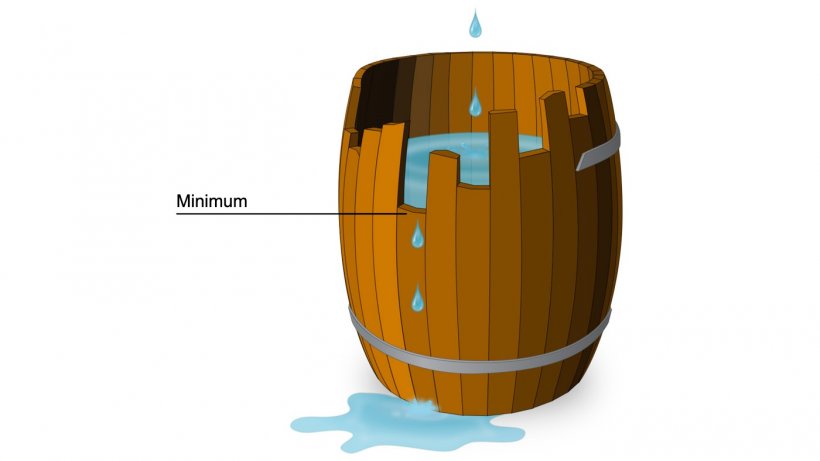In swine, protein deposition associated mainly with muscle growth (lean tissue) requires the supply, digestion, and metabolization of protein as a source of amino acids (AAs). About 20 AAs in the ingredients that make up the diet, known as proteinogenic AAs, will allow protein biosynthesis. Not all AAs are essential since the pig can partially or totally synthesize half of them de novo fairly efficiently: alanine, asparagine, aspartate, cysteine, glutamate, glutamine, glycine, proline, serine, and tyrosine, as long as there is no deficiency of N, protein, or any amino acid precursor.
When optimizing swine feed, the minimum AA recommendations are met by including different protein sources and synthetic AAs. These recommendations are expressed as AA concentration in feedstuffs and their standardized ileal digestibility (DIS).

Therefore, we define essential AAs as those not synthesized by the animal's organism or that are not synthesized in sufficient quantities or at a high enough rate to meet the requirements and, therefore, must be provided through the feed (Wang et al. 2014). In swine, lysine (Lys) is the first limiting essential AA as it is usually the most deficient AA in most ingredients typically available in swine feed relative to requirements (NRC 2012, FEDNA 2019).
When an essential amino acid is not provided in adequate amounts in the diet, protein synthesis is limited to the availability of that AA. One way to describe a limiting amino acid is to use the concept of a Liebig's barrel based on a Michaelis-Menten function of minimum (Figure 1). The protein is the Liebig's barrel and the amino acids are the individual staves that make up the barrel. When one stave is shorter than the others, the barrel can only be filled to the level of the shortest stave. In other words, when an essential amino acid is deficient, proteins can only be synthesized to the level of availability of that limiting amino acid, the first one that limits the utilization of the rest. Lysine is the most common limiting AA in swine.

Figure 1. Graphical example of the meaning of a limiting amino acid based on Liebig's law. The protein is the barrel and the amino acids are the individual staves that make up the barrel. The capacity of the barrel is limited by the shortest stave just as the growth of the pig is limited by the least available amino acid.
Amino acids administered in excess will be deaminated and the resulting urea will be excreted in the urine (with an energy expenditure associated with the deamination process). Finding a good balance between the supply of AAs and the needs or recommendations for AAs is important for physiological, metabolic, and production reasons. Protein is a relatively expensive nutrient and many countries rely on imported protein sources for animal feed (widely in the EU). In addition, the inefficient use of protein, due to its reduced digestibility and/or availability, contributes to increased nitrogen excretion, the environmental impact of which is a problem in different swine-producing areas worldwide. With the increasing availability of synthetic AAs such as L-Lys, DL-Met (or L-Met analogs), L-Thr, L-Trp, and L-Val, it is now possible to formulate low protein diets with a balanced AA content.
Amino acids are simple molecules with low molecular weights, consisting of hydrocarbon chains with an amino group (NH2) and an acid group (COOH). With the exception of glycine, all amino acids show optical isomerism and can therefore be presented in their two stereoisomeric forms: D and L. In animal proteins, only the L form is present. However, in certain cases and after transformation to the corresponding L form, the animal has enzymes capable of utilizing the D form. For tryptophan (Trp), the equivalence is high in swine (90-100%) but in poultry, it's only 55-85%. In contrast, the D-isomers of lysine and threonine (Thr) are not biologically active and therefore have no nutritional value for the animal. In the European Union, amino acids, their salts, and analogs are classified within the category of nutritional additives in a separate functional group (3c) according to Regulation (EC) 1831/2003. Lys, Met, Thr, Trp, valine (Val), isoleucine (Ile), arginine (Arg), and histidine (His) are the synthetic amino acids currently available for feed manufacture.
The concept of ideal protein
The concept of ideal protein was proposed more than 50 years ago by Mitchell (1964) and is still valid today. The maximum efficiency of metabolic utilization of protein and essential AAs will be obtained when the aminogram (relative amount of the different essential AAs) absorbed, and in blood, is as similar as possible to the aminogram retained or required by the animal. Thus, the biological value of the absorbed protein and of each essential AA will supposedly be optimal. For this principle to be of practical use, the following are required:
- The relative requirements of AAs for each productive function (growth, gestation, milk production, etc.) do not vary substantially with age or time, and the requirements in essential AAs for maintenance are low.
- The amino acid content of the feed is expressed in digestible AAs, more specifically, in standardized ileal digestibility AAs (SID). When using the ideal protein with total AAs it is assumed that the digestibility is the same for all amino acids in the diet.
In these conditions, the AA requirements in terms of ideal protein are expressed in relation to the Lys requirements (taking the Lys SID requirements = 100%). The expression of the other AAs in relation to Lys is very useful from a practical point of view since it simplifies the formulation; the nutritionist only has to consider the evolution of Lys SID requirements over time and combine it with a constant ideal protein profile.



